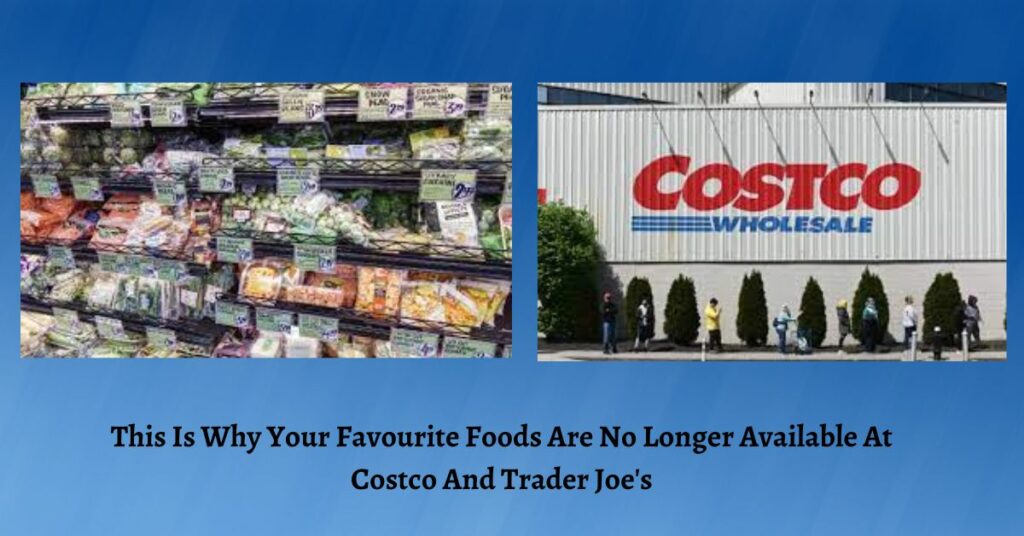It’s likely that you have experienced this: You visit Trader Joe’s to purchase caramel popcorn, churro bits, and roasted gorgonzola crackers, or Costco to purchase Kirkland Signature small peanut butter cups and take-and-bake pizza.
Your preferred goodies aren’t on the shelf when you arrive at the store, though. And to your horror, you find out they’re leaving. They are no longer available.
You can also check
- Police Say That 9 People Were Shot Outside Of A Bar In Philadelphia And Taken To The Hospital
- Murder By Targeted Fire: Man Shot And Killed Near Nationals Park
It ranks among the most discouraging supermarket shopping experiences. One of the most frequently asked queries by customers at retailers is “why” a cherished product has vanished. Fans maintain social media pages to follow Trader Joe’s products that have been discontinued, while some maintain blogs about Costco products that have gone missing.
On its “discontinued product feedback” contact page for customers, Trader Joe’s notes, “We recognise that it can be disheartening, devastating, even.
There are various factors at play when retailers like Trader Joe’s, Costco (COST), and others abruptly quit carrying popular items.
Products can occasionally be seasonal or have a limited production run because the manufacturer always intended to. Discontinuing products can also increase the treasure hunt-like attraction of stores like Costco and Trader Joe’s.
One significant problem is the difficulty of obtaining and maintaining shelf space at Trader Joe’s and Costco. These businesses exclusively sell the goods that are in the greatest demand with consumers.
That differs significantly from supermarkets and retailers like Walmart (WMT) and Amazon (AMZN), which carry a large variety of goods from numerous manufacturers. For instance, Costco offers about 4,000 different things at any given time. A typical supermarket sells 40,000 items.
The ability of these businesses to move large quantities of hotly-sought-after goods every minute of every day is crucial to maintaining prices below those of most of their rivals.
Companies need to switch to another item that people will buy if a product isn’t moving quickly enough off the shelf at Trader Joe’s or is sitting idle in Costco warehouses.
According to Trader Joe’s vice president of marketing Matt Sloan, “if you don’t have high volume or growing volume, the costs of creating and processing a slow-selling product are such that it doesn’t make commercial sense.”
In other cases, it’s the product itself: Businesses will discontinue products if suppliers raise prices excessively or the quality deteriorates.
According to Chuck Howard, an assistant professor of marketing at Texas A&M’s Mays Business School, “Costco would rather not sell an item than offer it at a price that’s too high.” “Selling items that consumers would see as being overly pricey would be off-brand for them.”
For instance, roughly five years ago, according to Marcus Walker, an assistant buyer of frozen foods at Costco from 2005 to 2020, the retailer substituted a $27 10-pound boneless, skinless chicken breast from Perdue with a $21.99 Wayne Farms equivalent.
Items that can be found for less money at other retailers should also be removed. Costco wants their goods to be the most affordable choice. Walker claimed that the company discontinued selling Hot Pockets because it was unable to match Sam’s Club’s pricing.
Teams from Costco purchase products from suppliers at rival retailers and test them to gauge their quality versus Costco’s. According to Walker, if they discover an item tastes better somewhere else, they will encourage the supplier to make improvements for Costco. If that doesn’t work, Costco will try to replace the item.
The stability of the product supply is a different concern that the pandemic brought to light. When a producer can’t make enough of a product, the businesses cease selling it and switch to something they can reliably keep on the shelves.
Manufacturers stopped making numerous secondary products in 2020 and 2021 in order to focus on producing their most popular products, as demand was extremely high due to consumers stocking up on groceries during the pandemic. Even while demand decreased this year and factories resumed operating at more regular capacity, producers are still not producing as many different products as they were prior to the outbreak.
You can also check
- Nasdaq stops The IPOs Of Small Chinese Companies While It Looks Into Stock Market Rallies
- Israel& Occupation Forces Have Killed Six Palestinians In The West Bank
Companies like Hormel Foods (HRL), which makes trademarks like Skippy and Spam, and Mondelez (MDLZ), which owns brands like Oreo, are among those that recently said they are focusing on their best-performing items by offering fewer products overall.
Fans of Costco frequently inquire to Angela Ackerman, who manages the Instagram account @Costcoguide with more than 230,000 followers, as to why they can’t locate the retailer’s dried dark chocolate mangoes in particular.
She explained, “They fall in love with something and want to see it again. Ackerman is aware that scarcity can increase sales. She purchases extra before it runs out after she learns that a beloved item will no longer be sold at Costco. “I stock up if I know it will be gone soon.”
Final Lines:




